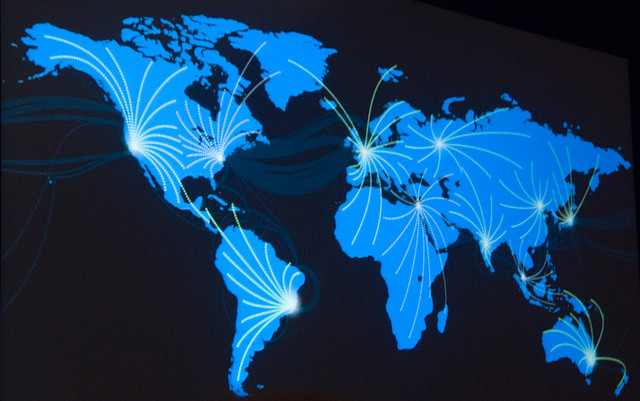 NEWS
NEWS
 NEWS
NEWS
 NEWS
NEWS
If CIOs think that they have trouble dealing with the increase in unstructured information now, then they should wait until 2020 comes around. A new global traffic forecast from Cisco Systems Inc. that crossed the wire this morning predicts the amount of data coming off the connected universe will nearly quadruple over the next five years to a humongous 507.5 zettabytes per annum.
That rapid growth will occur on the back of an even faster rise in the number of objects hooked up to the web, which a separate study the switching kingpin published earlier this year expects to pass the 50 billion mark in the same time frame. Cisco anticipates that the resulting increase in Internet usage beyond traditional end-points will see the bulk of personal data move onto connected devices.
First in line to benefit from that are file synchronization providers such as Dropbox Inc. and Box Inc, which the new traffic report predicts will see the average user consume over 1.6 gigabytes of cloud storage by 2019 compared to just under a gigabyte today. That can largely be attributed to the limited capacity of mobile devices and wearables, but it’s also reflective of the broader increase in use of online services.
Cisco forecasts that total cloud consumption will quadruple within the next five years to account for 8.6 zettabytes of traffic by the end of 2019, much of which will originate from organizations moving more and more of their workloads off-premise. That mass migration is set to make a deep impact on both ends of the supply-demand equation.
Enterprises are set to transfer 56 percent of their applications and data to the public cloud, while providers, for their part, will step up investment in their infrastructure to keep up with the usage increase. As a result, the study estimates that the number of workloads running on any given server in a cloud data center will increase from an average of 5.1 in 2014 to 8.4 by 2020.
For reference, that’s four times the application density in traditional corporate environments today, but it’s not to say that the enterprise is falling behind the data curve. Cisco believes that on-premise infrastructure will likewise improve over the next few years, albeit in proportion to a much more modest rise in demand than what the public cloud is set to experience.
Workloads will grow 16 percent every year through 2019 behind the firewall compared to 44 percent off-premise, where the study sees software-as-a-service category snatching an additional 14 percent share of the market for a total of 59. That rise will come at the expense of managed infrastructure and middleware, which makes it all too plain why Amazon Inc. and its rivals have become so focused on adding value-added capabilities to their cloud platforms over recent years.
Support our mission to keep content open and free by engaging with theCUBE community. Join theCUBE’s Alumni Trust Network, where technology leaders connect, share intelligence and create opportunities.
Founded by tech visionaries John Furrier and Dave Vellante, SiliconANGLE Media has built a dynamic ecosystem of industry-leading digital media brands that reach 15+ million elite tech professionals. Our new proprietary theCUBE AI Video Cloud is breaking ground in audience interaction, leveraging theCUBEai.com neural network to help technology companies make data-driven decisions and stay at the forefront of industry conversations.